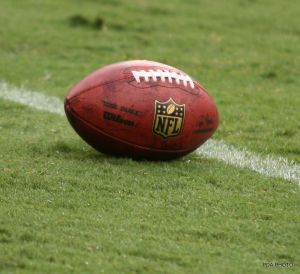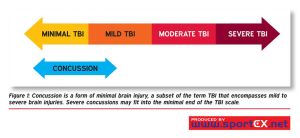A concussion lawsuit filed by two former NFL players focuses on the existence of racial bias in science, leading to differences in financial payouts for players.
Late last August, Najeh Davenport and Kevin Henry accused the NFL of discriminating against Black players when evaluating those who have suffered concussions in order to qualify for “dementia-related payments” from the football league. According to their claim, the two players felt that the neurocognitive tests that are conducted to determine if they are eligible to receive these payments, use “race-based adjustments,” which put them at a major disadvantage when trying to get compensation.

In 2012, a lawsuit was filed to represent over 4,500 former NFL players who believed that the NFL should be responsible to compensate retired players who suffered head injuries as a result of playing football for the league. Those players won their lawsuit in 2014, which then required that the NFL to provide compensation for these types of traumatic head injuries. While this has allowed some players to get significant financial payouts, it has been stated that “over two-thirds” of those players who have requested this compensation have been denied.
Davenport and Henry’s lawsuit takes into consideration that there have been a large number of players who have not been able to receive these payouts. In their lawsuit, they specifically state that the way in which players are tested in order to qualify for these “dementia-related payments” discriminates against black players as they use a cognitive functioning test that has a different baseline which is based on race. This practice is known as “race-norming,” where neuropsychologists use “historical trends” on cognitive tests to show how the average scores of various races differ. Based on these averages, neuropsychologists have set a variety of benchmarks that are used to determine the level of cognitive impairment that one may possess. While the initial process was designed with “the goal of reducing inaccurate diagnoses of cognitive impairment” for Black people, these two NFL players have stated that these lower benchmarks have made it so that they cannot receive an accurate diagnosis of their cognitive impairment resulting from their head trauma. As a result, they were unable to qualify for the concussion payouts that they may have otherwise.
Within the past week, the two NFL players have come out to say that they want their own representative to be present at a mediation where they will address the issue surrounding the use of different benchmarks to determine cognitive impairment. After back-and-forth conversations with the NFL about these racial benchmarks and how they may have impacted several players in the past, a resolution has not yet been reached.

An investigation has been launched into how these race-based benchmarks have been used in the NFL and the way they determine cognitive impairment in their players. More information is needed before a final resolution will be reached in this case.
At Cabrini, diversity, equity and inclusion have always been an important topic. The events of this past year have brought increasing attention to the need to continue to address issues of inequity. When asked about the work that Cabrini is currently engaged in within this area, David Howell, athletics communication director and athletics diversity & inclusion designee, shared his thoughts.
“I think the University as a whole is working on new initiatives to continue to promote diversity and inclusion. There is a Diversity, Equity and Inclusion Advisory Council that was created by the Board of Trustees that has worked since the summer to take a deep look at the University and will be presenting recommendations to President Taylor over the next several weeks,” Howell said.
One specific area of campus that continues to pay close attention to equity and inclusion is the athletics and recreation department at Cabrini.
“I think we make it a point to treat every student-athlete the same, no matter their age, race or sport. As administrators and coaches, our goal is to give all of our student-athletes the opportunity to compete in the sport(s) of their choice to their best best ability,” Howell said.
Issues like race-based benchmarking in the NFL highlight that there is still work that needs to be done in the area of equity and inclusion. Cabrini is one institution that has committed to continuing its work in this important area.
“Over the last several months, both the University and Athletic Department have acknowledged that we are always working to learn and get better at creating a diverse and equitable environment for our entire community. That work does not have an expiration date,” Howell said.
Just as Cabrini continues to evaluate its own institution each day, organizations such as the NFL continue to do this work as well.


